No matter how careful you are on the road, you can still be involved in a car accident when you least expected it. Life works in many ways, and you can never predict the future. While you may be a good driver who is always respectful of traffic rules, you cannot control how other motorists behave on the road.
Being involved in a car accident can leave you with so many questions. What should I do next? Who pays for my medical bills? Who pays for my car repair/replacement? Will I be compensated for the losses I have incurred? How do I follow up with the at-fault motorist? What are my rights?
While you may be feeling overwhelmed and confused, your next steps will play a critical role in determining whether you will be compensated or not.
To help you make informed decisions that won’t jeopardize your chances of recovering maximum compensation for your losses, we have put together this comprehensive guide that you can follow to protect your rights.
Car Accident Statistics: Understanding the Scope of the Problem
For most American families, cars form a crucial element of their daily life. Data from the 2019 census showed that approximately 91.3% of American households have access to a car. Other studies show that an average American spends approximately 101 minutes a day in a vehicle.
Unfortunately, this dependence comes with a downside that can cost you your life. Research shows that an average American is ten times more likely to be involved in a car accident in their life. For many people, these accidents will be life-changing, if not fatal.
According to the U.S Department of Transportation’s National Highway Traffic Safety Administration, there were slightly more than seven million auto accidents on American roads in 2021. The figure represented the highest number of car crashes recorded in one year since 2006.
More than three million Americans involved in these accidents suffered serious injuries, while more than 31,700 of them died as a result of the crashes. The number of fatalities recorded was approximately a 12.6% increase from the number of fatalities recorded in 2020.

Car accidents happen on highways, parking lots, two-lane roads, and stop signs. An accident is more likely to occur during rush hour and in intersections.
Alaska is still the most dangerous state to drive in, with a high percentage of accidents in the state involving SUVs and pickups. Vermont records the highest number of deaths involving passengers and a slightly lower number of accidents involving SUVs and pickups.
Delaware, New York, and Florida are among the states with the highest percentage of road accidents involving motorcyclists and bicyclists, while Maine reports the highest number of deaths from single-car accidents.
These statistics paint a grim picture of how dangerous it is to drive in some parts of the United States. Therefore, you want to be fully aware of your rights when involved in a car accident.
What Are the Leading Causes of Car Accidents?
A significant part of filing a motor vehicle accident lawsuit is determining liability. Liability in auto accidents anchors heavily on causation, meaning you have to do everything possible to determine what exactly caused the accident.
The are many reasons why accidents occur, but in most cases, you will find that driver behavior plays a critical part in the process. Below are some of the leading causes of car accidents in the United States:
1. Distracted Driving
One of the most common causes of car accidents is distracted driving. The term distracted driving includes any activity or behavior that may cause a motorist to lose focus of the road.
Distractions draw your attention away from driving, making it dangerous for your passengers, other drivers, cyclists, and pedestrians.
Common forms of distracted driving include texting or talking on the phone while driving, drinking while driving, and using a GPS while driving.
2. Speeding
Another major cause of car accidents is speeding. When you drive too fast, you cannot manage to stop in time to avoid a collision when something unexpected happens. This can lead to T-bone accidents, rollover accidents, and head-on collisions.
Even if you are driving within the posted speed limit, you may still be driving too fast for certain conditions such as bad weather or heavy traffic.
3. Driving Under the Influence of Alcohol or Drugs
Drugs and alcohol impair your judgment, motor skills, and reaction time. Driving while intoxicated is dangerous and increases your chances of causing an accident.
According to the National Highway Traffic Safety Administration (NHTSA), almost 30 people in the United States die in alcohol-related accidents every day. That’s one death every 48 minutes.
4. Reckless Driving
Reckless driving is a catch-all term that includes any type of driving behavior that puts other drivers, passengers, and pedestrians at risk.
Some common examples of reckless driving include tailgating, speeding, running red lights or stop signs, and weaving in and out of traffic.
If you are involved in a car accident and can prove that the other driver was engaging in reckless driving at the time of the accident, you may be able to hold them liable for your injuries and damages.
5. Road Rage
Road rage is aggressive driving that occurs when a driver becomes angry, frustrated, or agitated while behind the wheel. This can lead to dangerous and even deadly car accidents.
Some common examples of road rage include speeding, tailgating, weaving in and out of traffic, cutting off other drivers, and using obscene gestures.
If you are involved in a car accident caused by road rage, you may be able to hold the other driver liable for your injuries by filing a personal injury lawsuit.
6. Faulty Car Parts
In some cases, car accidents are caused by faulty car parts. If a defective car part causes a car accident, you may be able to hold the car manufacturer liable under product liability laws.
Common examples of defective car parts that can cause accidents include defective tires, brakes, and airbags.
7. Improperly Maintained Roads
In some cases, car accidents are caused by improperly maintained roads. This can include potholes, cracked or uneven pavement, and debris in the roadway.
If you are involved in a car accident caused by an improperly maintained road, you may be able to hold the government entity responsible for maintaining the road liable under premises liability laws.
What Are the Different Types of Car Accidents?
There are different types of car accidents, and each one can result in a variety of injuries.
Some of the most common types of car accidents include T-bone accidents, head-on collisions, rollover accidents, and side-impact collisions.
1. T-Bone Accidents
A T-bone accident occurs when the front end of one car hits the side part of another. T-bone accidents are also known as side-impact collisions or broadside collisions.
T-bone accidents often occur at intersections when one driver runs a red light or stop sign and hits the side part of another vehicle that has the right of way.
2. Head-On Collisions
A head-on collision is perhaps the most dangerous type of car accident. It occurs when the front end of one vehicle collides with the front end of another car.
Head-on collisions often occur when one driver crosses the centerline of the road and collides with an oncoming car.
Head-on collisions can also occur when one driver attempts to overtake and collides with an oncoming vehicle.
3. Rollover Accidents
A rollover accident occurs when a vehicle flips onto its roof or side. Rollover accidents are often caused by excessive speed, sudden turns, or improper braking.
4. Rear-End Collisions
A rear-end accident happens when the front end of one car collides with the rear end of another.
Rear-end accidents mostly occur when one driver is following another vehicle too closely and does not have time to stop when the other vehicle slows down or comes to a stop.
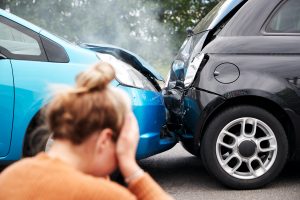
Rear-end collisions can also be caused by one driver tailgating another vehicle that has been stopped at a red light or stop sign.
What Are Some of the Common Car Accident Injuries?
Car accident injuries can range from mild to severe, and they can have a long-lasting or even permanent effect on your life.
Some of the most common car accident injuries include neck injuries, back injuries, whiplash, broken bones, head and brain injuries, and spinal cord injuries.
1. Neck Injuries
Neck injuries are one of the most common types of car accident injuries. They can range from mild strains and sprains to more serious fractures or dislocations.
2. Back Injuries
Back injuries are also common in car accidents. Back injuries can range from mild strains and sprains to more serious fractures, herniated discs, or spinal cord injuries.
3. Whiplash
Whiplash is a type of neck injury that occurs when the head is suddenly jerked forward and then back again. Whiplash often occurs in rear-end collisions, and it can cause pain, stiffness, and headaches.
4. Broken Bones
Broken bones are another common type of car accident injury. Broken bones can include fractures to the arms, legs, ribs, or skull.
5. Head and Brain Injuries
Head and brain injuries are also common in car accidents. Head and brain injuries can range from mild concussions to more serious traumatic brain injuries.
6. Spinal Cord Injuries
Spinal cord injuries are another common type of car accident injury. Spinal cord injuries can result in partial or complete paralysis.
If you have been in a car accident, it is important to seek medical attention right away. Even if you do not think you have any injuries, it is important to get checked out by a doctor.
Some car accident injuries may not cause symptoms until days or even weeks after the accident occurred.
Negligence and Car Accidents – What Is Auto Negligence?
Negligence is a relatively common term in law. Basically, negligence means failure to do or doing something that another reasonable individual would not do in the same circumstances.
It means that if another driver does or fails to do something that causes you harm, they are deemed negligent. In every car accident, one driver is usually more negligent than the other.
Four critical elements must be proved to recover damages due to someone else’s negligence. The four elements are;
a. Duty of Care
All drivers have a duty to operate their vehicles in a reasonably safe manner. The duty of care applies to all drivers, regardless of whether they are driving a car, truck, motorcycle, or any other type of vehicle.
This is the acceptable level of care that any sane person would exercise in a given situation. For instance, if you are driving in bad weather conditions, duty of care dictates that you drive under the speed limit.
A driver will not be exercising duty of care if they are driving over the speed limit and end up hitting the car in front of them.
b. Breach of Duty
A breach of duty occurs when a motorist fails to operate their vehicle in a reasonably safe manner.
To continue on the example above, if a driver is speeding in adverse weather conditions and hits another vehicle, they have breached their duty of care.
If a driver is driving under the influence of drugs or alcohol, they have also breached their duty of care.
c. Causation
Causation means that the breach of duty must have caused the accident. For example, if a driver was speeding and hit another car, causation would be established if it can be shown that speeding was the direct cause of the accident.
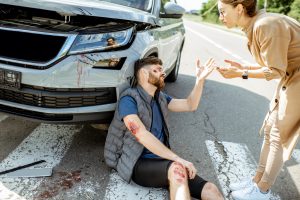
If a driver was driving under the influence and hit another car, causation would be established if it can be shown that the intoxication was the direct cause of the accident.
d. Damages
Finally, there must have been some form of quantified damage caused as a result of the accident. This could be damages to property, injuries, or even death.
The specific type of injury or property damage suffered varies and may extend beyond physical property damage or bodily injuries to emotional stress, pain and suffering, loss of consortium, etc.
I Have Been in a Car Accident – What Should I Do?
When you are involved in a car accident, you must take the necessary steps to protect your rights. The first thing you need to do is stop your car and move it to the side of the road if possible.
If you are unable, turn on your hazard lights to warn other drivers. Once you are safely off to the side, assess yourself and your passengers for injuries. If anyone is injured, call 911 immediately.
Do not leave the accident scene until the police have arrived and you have exchanged information with the other driver. If you leave the accident scene before police arrive, it may be considered a hit-and-run which can land you in trouble even if you were not at fault for the accident.

Ensure you get the following information from the other driver: name, address, phone number, insurance company, policy number, and license plate number.
If there are any witnesses, ask for their name, address, and phone number. After the accident, contact your own insurance company to report the accident.
Also, consider taking clear photos of the accident scene. Be sure to capture the exact position of the two cars, any physical bodily injury suffered, and the damage to your car. This can help your attorney prove who was at fault for the accident.
Auto Insurance and Car Accidents: Understanding How Liability Insurance Coverage Works
In the event of a car accident, the at-fault driver’s liability insurance will cover the property damage and bodily injury claims of the other party involved. Drivers in every state except New Hampshire are required to carry some form of liability coverage.
The minimum state-required liability coverage requirements are usually formatted as three numbers separated by slashes. For instance, California’s minimum mandated requirements are 15/30/5.
The first number in the combination stands for the required bodily injury protection per individual. In this case, the required personal injury per person is $15,000.
The second digit in the combination depicts the total required bodily injury per accident. So, in California, the total bodily injury coverage required per accident is $30,000.

This is the total cap on the per-person limit. So, if several people are injured in a car accident in California and their collective damages exceed $30,000, they will not be able to collect more than $30,000.
The last number in the combination represents the property damage coverage. In this case, motorists must be insured for at least $5,000 for any property damage they may cause in an accident.
It is critical to ensure that you always carry the minimum coverage levels required by your state. If you are caught driving without the minimum state-required liability coverage, you may be forced to pay heavy fines and risk having your license suspended.
What Are the Other Types of Insurance?
Other than liability coverage, there are other types of car insurance that you need to know. Remember that you need to carry more than the minimum state-required liability coverage.
- Collision Coverage: Collision insurance pays for damages to your car when you collide with another vehicle or object. It will also cover the cost of repairs even if you are at fault in the accident.
- Comprehensive Coverage: Comprehensive insurance covers damage to your car that is not caused by a collision. This can include things such as damage caused by hail, fire, theft, or vandalism.
- Underinsured Motorist Coverage: This type of insurance kicks in when the other driver does not have enough liability coverage to compensate you for your damages fully. It will also cover you if an uninsured driver hits you.
- Medical Payments Coverage: Medical payments coverage pays for your medical expenses plus that of your passengers after an accident, regardless of who is at fault.
- Rental Car Coverage: Rental car coverage reimburses you for the cost of renting a car while your own car is being repaired after an accident.
Filing a Claim: How Do I Deal with the Insurance Adjusters?
If you were injured in a car accident and the other driver was at fault, you need to file a claim with the other driver’s liability insurance company and deal with the insurance adjusters of that company.
Some insurance adjusters may refer to themselves as claims handlers or claims representatives. It all means the same thing.
Typically, these are insurance company employees tasked with negotiating with you to settle your insurance claim. However, you need to be aware of the fact that their job is to settle every claim as quickly as possible and for as little as possible.
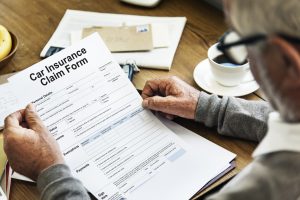
Most of them are aggressive and may even try to intimidate you into accepting a low offer. But some of them may act friendly and behave as if they are on your side. No matter how your insurance adjuster behaves, you need to know that their goals will never be aligned with yours.
So, if you want maximum compensation or your claim is overly complex, be sure to hire an experienced car accident attorney to help you with your case. Your attorney will assess your damages to establish their true value.
They will fight viciously to defend your rights and ensure you receive the rightful compensation you deserve. Attorneys have experience dealing with insurance adjusters and will know how to defend your rights.
Understanding Car Accident Lawsuits
To recover compensation for damages suffered in a car accident, you must understand how car accident lawsuits work.
Which court system listens to these types of lawsuits? How is fault determined? Which types of damages can you sue for? How are judgements and settlements determined?
This section answers these questions.
The Civil Court System
All car accident lawsuits are decided in a civil court system. The civil court system is quite different from the criminal court system. Generally, the criminal court system is designed to punish lawbreakers through some form of state sanction, including prison time, community service, or fine.
However, civil courts serve justice by making wrongdoers pay monetary damage to their victims. Unlike in a typical criminal trial where the complainant is mostly the state, civil cases usually involve two individuals or entities suing each other.
Some acts by drivers, such as driving under the influence of drugs/alcohol, hit-and-run, and vehicular manslaughter, are categorized as criminal offenses and will be heard in a criminal court.
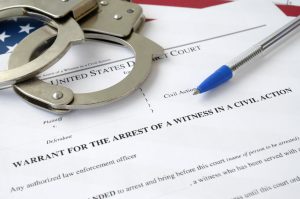
Car accidents fall under personal injury law or tort law. In fact, car accidents are perhaps the most common type of personal injury lawsuit.
When you file a car accident lawsuit against another driver, you must prove that the other motorist was at-fault to recover damages. Proving that someone was at-faulty is much easier than proving that someone was guilty.
In criminal offenses, the complainant must prove beyond reasonable doubt that the defendant was guilty of their actions.
How Is Fault Determined in a Car Accident Lawsuit?
When you are involved in a car accident and get injured or suffer property damage, it is prudent to establish which party was at fault to help you recover damages suffered. But how is fault determined in a car accident lawsuit?
If a police officer comes to the accident scene, they will make an official accident report. You can contact the police department where the accident occurred to obtain a copy of your accident report. This will form a critical piece part of determining fault in the accident.
Typically, fault in auto accidents is usually determined by state law. Different states have different laws, but most use a comparative fault system. This system assigns a percentage of fault to each party involved in the accident.

For example, if you are involved in an accident where you rear-end the car in front of you, then you will most likely be found at fault. This is because you were not paying attention to the road and crashed into the other car.
However, if the other driver ran a red light and crashed into you, they would be found at fault. This is because they caused the accident by violating a traffic law.
Your attorney will work with state law to assign fault to the appropriate party. This information will be helpful in the process of recovering damages from the at-fault party.
Car Accident Lawsuit Judgement
While car accidents are a legal matter, filing an insurance claim against the other motorist doesn’t amount to suing, nor is hiring a car accident lawyer.
In most cases, you and your lawyer will settle the matter with the other party without a need to formally file a lawsuit against the at-fault driver. But if the other party’s insurance company isn’t willing to settle your case out of court, you may be forced to file a lawsuit formally.
Even once the lawsuit has been filed, there is a significant chance of settling the case before the matter goes to trial. In fact, research shows that more than 95% of all personal injury lawsuits settle before going to trial.
You must keep in mind that even if your case doesn’t go to court, the standards for demonstrating that the other driver was at-fault for the accident remain the same.

This is because both parties understand that the matter could proceed to court if a deal isn’t struck, and the side with a stronger case will most likely get a favorable outcome. In most cases, the threat of a lawsuit is always enough to bring the other party to the negotiating table.
If your case proceeds to trial, a judge will listen to both sides and determine who was at fault. Typically, each party will be assigned a percentage of fault. Sometimes, one party can be 100% responsible for the accident.
In a comparative fault system, you have a chance of recovering damage from the other party as long as you are assigned a fault percentage of less than 50%.
I Have Been in a Car Accident – What Are My Rights?
What are my rights after a car accident? This is one of the most common questions we come across every time. However, the answer usually depends on who is to blame for the accident.
In cases where it is absolutely clear that the other motorist was at fault for the accident and you were left injured, you have several rights, including a right to claim compensation from the responsible party.
That is why a car accident attorney will always want solid evidence that proves negligence on the part of the other motorist before they take up your claim. You also want to ensure you are still within the time limit for filing a personal injury lawsuit as stipulated in your state’s statute of limitations.

Besides the right to claim compensation, you also have a right to the other driver’s information. Therefore, don’t be afraid to ask the other driver’s name, address, phone number, car details, and insurance policy number.
You must also provide your auto insurance details if the other driver requests them. The reasonable grounds for asking for this information would be when someone was injured in the crash, or there was significant property damage.
If the other driver doesn’t have their insurance details at the time of the accident, you can request them to produce them at a nominated police station once the accident has been reported. This should be done within the shortest time possible.
What Complications Can You Encounter with Car Accident Lawsuits?
Typically, two scenarios can lead to complications of negligence claims; when multiple defendants were at fault and if there is shared fault.
If multiple defendants were at fault and are found liable for damages suffered, they will be made to share the cost of damages between them.
Unfortunately, arranging for the at-fault parties to share damage can be pretty complicated. Different jurisdictions have different rules on how this can be done.
While some states simply assign damages proportionate to the percentage of fault for each defendant, others assign damages according to the doctrine of joint and several liability. Under the doctrine of shred liability, the at-fault parties share the total responsibility for damages equally.

Things can also be complicated if it is determined that you were partly to blame for the accident. The comparative negligence law functions differently in every state, but the basic principle is the same.
As long as your percentage of fault is less than 50%, you can recover damages at a reduced rate proportionate to your percentage of fault.
For instance, if the court decides that you were at fault for 20% of the accident, the defendant will be required to pay 80% of the damage costs.
Car Accident Statute of Limitations
Every state has a statute of limitations for filing a car accident lawsuit. This is a set amount of time in which you must file your lawsuit, or no court will hear your case.
The statute of limitations for car accidents typically falls between one and four years, depending on the state. It is important to speak with an attorney as soon as possible to find out the specific statute of limitations for your case.
If you do not file your lawsuit within the statutory period, you will likely lose your right to recover damages. An experienced car accident lawyer can help ensure that your case is filed within the appropriate timeframe.
I Have Been in a Car Accident – Do I Really Need to Hire a Car Accident Attorney?
While it is always possible to deal with minor fender bender cases on your own, it is critical to seek legal help from an experienced attorney if you have been injured in a car accident.
An experienced car accident lawyer will be able to help you recover damages for your injuries and property damage. They will also be able to help you negotiate with the insurance company to ensure that you receive a fair settlement.
Remember that insurance companies are in business, and their primary objective is to settle your claim for as little as possible.
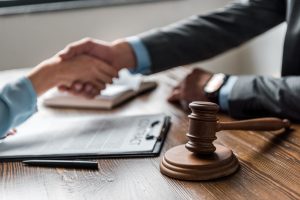
If you don’t hire an attorney, you will be required to negotiate with experienced insurance adjusters on your own. These people use all kinds of tactics to minimize the amount of money you recover.
A car accident attorney will level the playing field and ensure that you are compensated for your injuries. They will face the insurance adjusters with your best interest in mind and fight for the maximum compensation you deserve.
Your attorney will gather all of the evidence necessary to support your case and work with state law to assign fault to the appropriate party. This information will be crucial in your quest to recover damages from the responsible party.
Can I Afford a Car Accident Lawyer?
Many car accident victims assume that they cannot afford to hire a car accident lawyer after a crash. However, the truth is that almost every victim can afford an attorney because most car accident attorneys operate on a contingency fee basis.
It means that you pay nothing unless the attorney wins your case. If you receive a favorable outcome (settlement), the attorney will be paid an agreed-upon percentage of the settlement.
Some of the leading law firms, go an extra step and provide you with top-rate medical treatment on lien and even offer you cash advances, so you don’t slip into a financially strapped position.
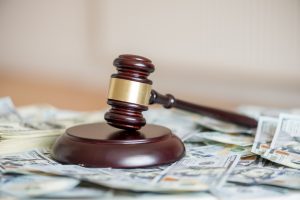
The contingency fee arrangement also provides your attorney with the financial incentive they need to obtain the maximum compensation possible. Typically, the higher the settlement amount, the more the attorney will receive in fees.
While the contingency fee arrangement isn’t entirely free because you still have to pay if you win your case, it is a risk-free approach to hiring some of the best lawyers to handle your car accident case.
With the best attorneys by your side, your chances of recovering significantly more money than what you would have received while handling the case on your increase massively.
Why Should I Contact Legal Giant?
At Legal Giant, we are a lawyer referral service with a network of highly dedicated car accident attorneys with experience representing car accident victims in many different types of car accident claims.
We pride ourselves on going the extra mile to connect our clients with the best attorneys in their local area. We understand that every case is unique and will devote all our resources to helping you get the rightful legal representation you deserve.
Our primary objective is to help you get your life on track as fast as possible. So, if you have been injured in a car accident, feel free to contact us today and we shall connect you with a car accident lawyer in your local area!

